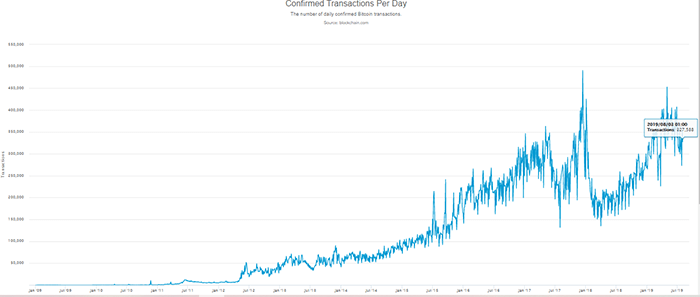Table of Contents
- Cryptocurrency adoption by the numbers
- The cryptocurrency industry is fixing up
- There’s still more work to be done
Blockchain technology and its practical application in cryptocurrencies is barely 10 years old. Yet, cryptocurrency has been disrupting markets, industries and economies since Satoshi Nakamato opened the proverbial Pandora’s Box on the future of money with the release of the Bitcoin whitepaper in 2009.
Global political and business leaders now talk about cryptocurrencies – many of them are apprehensive of its disruptive potential and a few of them are cautiously embracing it. One would have thought that almost everybody in the world will be using cryptocurrencies because of how it reduces the power of governments and their agents in determining the valuation of wealth.
Unfortunately, cryptocurrency has largely struggled to unlock mass-market adoption despite all the buzz that it has garnered in the last 10 years. This piece provide insights into why the mass-market adoption of cryptocurrency has been elusive and developments that could help onboard more everyday users.
Cryptocurrency adoption by the numbers
It is somewhat difficult to get accurate data points on cryptocurrency adoption, there are almost 2500 cryptocurrencies in the market and many of them operate in silos. However, we can make decently logical inferences about the state of the cryptocurrency market by looking at Bitcoin stats and maybe adding Ethereum stats to the mix.
For one, Bitcoin is the oldest, most valuable, and most popular cryptocurrency. Bitcoin’s dominance in the cryptocurrency market is about 68%; its market cap of about $208B represents 67% of the $307B market cap of the entire cryptocurrency market as at August 6, 2019.
- Cryptocurrencies are insignificant in the grand scheme of things
Starting with the market cap of the entire cryptocurrency market valued at $307.14B, cryptocurrencies are practically negligible in relation to all other asset classes. Data from the BIS suggests that trade in the global forex market averages $5.1 trillion per day. The value of all the gold ever mined is around $7.64 trillion if you multiple current price of gold by volume of gold ever mined. Microsoft (MSFT) has a market cap of $1.02 trillion, Amazon (AMZN) is valued at $928B, and Apple (AAPL) was valued at $911B at the end of Q2 2019.

- Growing but unimpressive user base
Data from Blockchain.com suggests that the total number of Bitcoin wallets has increased 50.46% in the last one year to 41,037,416, but that’s not necessarily the accurate number of people using Bitcoin because people tend to have more than one Bitcoin wallet.
However, the number of unique address Blockchain addresses and the total number of daily transactions reveal the growing but relatively insignificance of cryptocurrencies in the grand scheme of things.

Total number of unique addresses used

Total number of confirmed daily transactions
- Complexity
Another factor slowing down the mass-market adoption of cryptocurrencies is the perceived complexity associated with Blockchain technology and cryptocurrencies. Blockchain and cryptocurrency are built on cryptography and cryptography is heavily reliant on advanced maths. Many retail investors have been taught to avoid assets that they don’t understand and the highly technical nature of Blockchains drives some potential users away.
- Reputational headwinds
Bitcoin first had its widespread use on Silk Road; hence, regulators, traditional financial institutions, and the conservative media have done an excellent hatchet job of demonizing cryptocurrency as the currency in trade for criminals. In addition, the speculative component of cryptocurrency trading coupled with its high volatility has been overexaggerated as another reason why ‘sane’ people should stay away from it.
The cryptocurrency industry is fixing up
The arrival of many financial services institutions in the cryptocurrency market is promoting trust and ease of access to drive the faster adoption of cryptocurrencies. For instance, Skrill, a global online payments and money transfer company made a big crypto push in mid-2018 when it opened up its platform for users to provide a simple way to buy and sell cryptocurrencies.
The fact that Skrill has been operating in the financial services industry for close to 20 years, the scale of its operations, and the strength of its reputation as a reliable payments company already eliminates the initial scepticism and distrust that people have towards pureplay crypto companies.
Skrill also allays the fears of new cryptocurrency users with a reliable and trustworthy custodianship service, dollar cost averaging for investors, easy portfolio management, immediate settlement of transactions, and an Easy-In Easy-Out fiat to crypto gateway.
Secondly, the uptrend in the transactional use of cryptocurrencies is enhancing its widespread adoption and many entrants in the crypto space are developing other use cases for cryptocurrencies beyond speculative trading. The development of stablecoins such as USDT, EURS, and USDC is already addressing the volatility concerns associated with cryptocurrencies. Merchants can now easily get paid in a stablecoin or have their crypto payments automatically swapped into stable coins to protect their revenue from volatility risk.
Lastly, the announcement of Facebook’s Libra has already triggered a sense of urgency on the need for new regulations to catch up with the innovation. Of course, the cryptocurrency industry is polarized about the entry of Facebook into the crypto industry. Some people believe that Facebook’s Libra and its focus on emerging markets could be the key to drawing many of the world’s unbanked population into the digital economy. Critics are worried that the cryptocurrency would be face with increased reputational risk because of Facebook’s current troubles with regulators.
Nonetheless, many of the regulatory uncertainty surrounding cryptocurrencies in many jurisdictions are already being addressed and clear regulatory conditions make it easier for people to position themselves for the future of money without running afoul of current or future legislation.
There’s still more work to be done
Currently, the most compelling reason to buy Bitcoin or any other cryptocurrency is directly/indirectly hinged on the possibility that its price could increase. However, the industry won’t scale very fast and adoption will be limited to tech enthusiasts, traders and investors until everyday people can get paid in crypto, buy their coffee with crypto, and maybe access financial services such as loans or insurance with crypto.
There is also a long list of technical challenges relating for scalability, speed, and security that must be fixed. For instance, during the height of 2017’s bull many Bitcoin transactions were stuck as unconfirmed for as much as one week. The fee structure on many Blockchains require users to sacrifice speed for low transaction costs. Hence, the mass market adoption of cryptocurrencies will happen faster if transactions speeds become comparable to speeds on legacy technology and at a cheaper price.
To fully unlock the mass-market adoption of cryptocurrencies and onboard the rest the world; the cryptocurrency industry needs to build an ecosystem of networks that facilitate the transactional use of cryptocurrencies.
Investment Disclaimer






